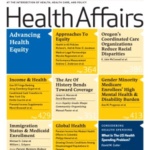Thursday, May 3, 2018
National surveys of homeless veterans have been conducted for over a decade, but there has been no examination of changes in the needs of homeless veterans. This article looks at data from the U.S. Department of Veterans Affairs' 2012, 2014, and 2016 CHALENG surveys to see how homeless veterans’ most pressing needs have changed over the last several years....Read More
Tuesday, April 3, 2018
Essentials of Health Justice: A Primer examines the legal, structural, and justice issues underlying health disparities and other types of health inequities. The authors assess the adequacy of current safety net programs and legal protections affecting the health of vulnerable populations, and look at concrete strategies for bringing about change to promote health justice. In an academic context, this new text introduces structural determinants of health and health justice in undergraduate and graduate law, public health, medical, nursing, and other health professions courses....Read More
Monday, March 5, 2018
This article shares how medical-legal partnerships help treat issues that drive health inequities. The authors identify multiple models for delivering medical-legal partnership services in clinical settings, and examined how health care organizations adapt the intervention to best meet the specific needs of its patients. While the models of delivery vary, the paper's authors also identified eight core elements that define the intervention, and offer recommendations to bring these partnerships to scale....Read More
Thursday, January 18, 2018
A study of an intervention among youth with type 1 diabetes, which included medical-legal partnership counsel as a key element, found that 30 percent of youth accepted legal counsel. Youth enrolled in the program were found to demonstrate significant improvement in their glycemic control after one year of the intervention, as compared to youth not enrolled in the program....Read More


